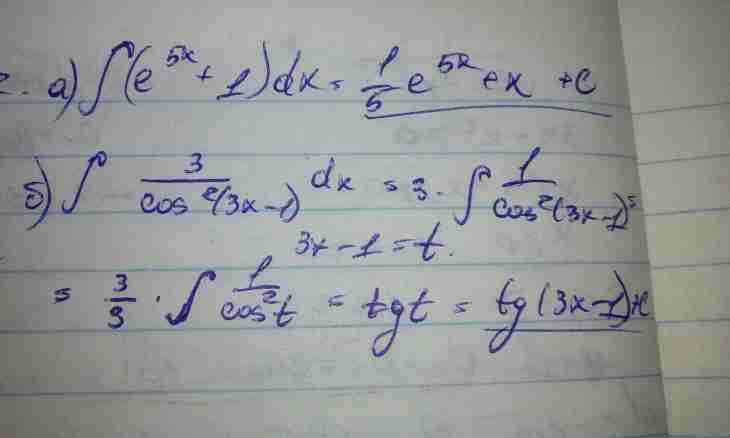The integral calculus represents quite extensive field of mathematics, its methods of the decision are used also in other disciplines, for example, to physics. Not own integrals is quite difficult concept at which study it is necessary to rely on good basic knowledge on this subject.
Instruction
1. Not own integral is a certain integral with integration limits, one or both from which are infinite. The integral meets an infinite top limit most often. It is necessary to consider that the decision exists not always, at the same time subintegral function has to be continuous on an interval [a; + ∞).
2. On graphics such not own integral looks as the area of the curvilinear figure which is not limited on the right side. There can be a thought that in that case it will be always equal to infinity, however it is right only if the integral disperses. As it is paradoxical, but on condition of convergence it is equal to final number. Besides, this number can be negative.
3. Example: solve not own integral of dx/x² on an interval [1; + ∞). Decision. It is optional to carry out the drawing. It is obvious that function 1/x² is continuous within integration. Find a solution, using Newton-Leibniz's formula which in case of not own integral changes a little: ∫f(x)dx = lim (F(b) – F(a)) at b → ∞. ∫dx/x² = - lim (1/x) = - lim (1/b-1/1) = [1/b = 0] = - (0 - 1) = 1.
4. Algorithm of the solution of not own integrals with lower or two infinite integration limits the same. For example, solve ∫dx / (x² + 1) on an interval (-∞; + ∞). Decision. Subintegral function is continuous on all the extent therefore according to the rule of decomposition integral it is possible to present in the form the sum of two integrals on intervals, respectively, (-∞; 0] and [0; + ∞). The integral meets if both of its parts meet. Check: ∫ (-∞; 0] dx / (x² + 1) = lim _ (a →-∞) artctg x = lim (0 – (arctg a)) = [artg a →-π/2] = 0 – (-π/2) = π/2; ∫ [0; + ∞) dx / (x² + 1) = lim _ (b →+ ∞) artctg x = lim (arctg b) = [artg b → π/2] = π/2;
5. Both halves of integral meet, so also it meets: ∫ (-∞; + ∞) dx / (x² + 1) = π/2 + π/2 = π.Примечание: if at least one of parts disperses, then the integral has no decision.

